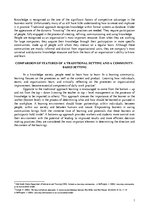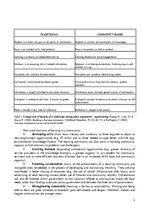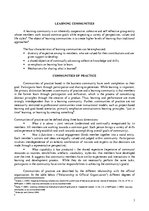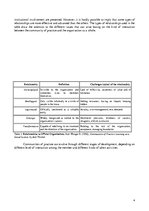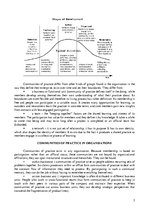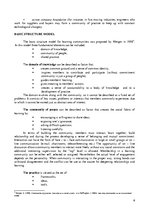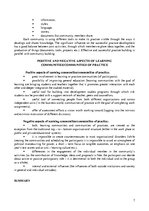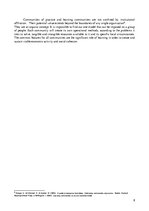-
Learning Communities
Оцененный!
Knowledge is recognised as the one of the significant factors of competitive advantage in the business world. Unfortunately many of us still have little understanding how to create and implicate it in practice. Traditional approach recognises knowledge within formal systems as database. Under the appearance of the dynamic “knowing” the new practices are needed. They require participation of people, fully engaged in the process of creating, refining, communicating and using knowledge.
People are recognised as an organisation’s most important resource. Even when they are working for large companies, they acquire their knowledge through their participation in more specific communities, made up of people with whom they interact on a regular basis. Although these communities are mostly informal and distinct from organisational units, they are company’s most universal and dynamic knowledge resource and form the basis of an organisation’s ability to know and learn. In a knowledge society, people need to learn how to learn. In a learning community, learning focuses on the processes as well as the content and product. Learning how individuals, teams, and organizations learn, and critically reflecting on the processes or organizational improvement, become essential components of daily work practice1.
Opposite to the traditional approach learning is encouraged to come from the bottom – up and not from the top – down (viewing the teacher or top – level management as the possessor of knowledge to be imparted to others). This approach stresses the importance of the learner or the worker (bottom level) in the process of determining what and how should be learned or pursued in the workplace. A learning environment should foster partnerships within individuals, between people, within our society and between humans and nature. Empowering learners in caring communities brings forth the immense love of learning and potentials that these learners or participants hold inside2. A bottoms-up approach provides workers and students more control over their environment with the potential of leading to improved results and more efficient decision making practices (they are considered the most important element in determining the direction and the content of the learning).…
Teorija par learning communities - personālvadībā izmantojama apmācības metode.

